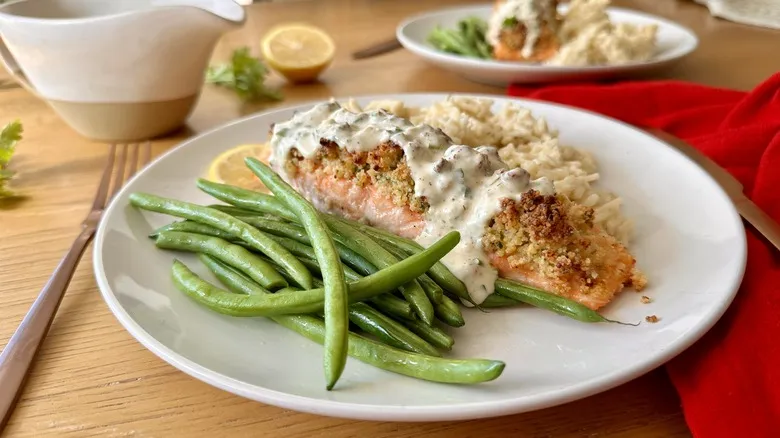Collect the ingredients for Parmesan-crusted salmon with creamy herb sauce
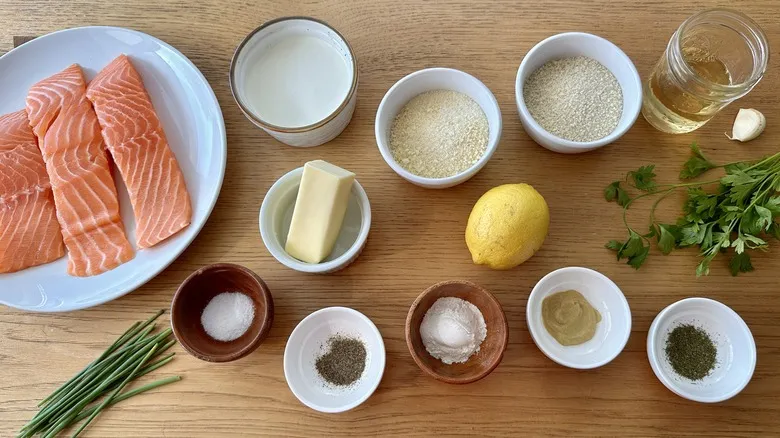
This recipe begins with salmon fillets covered in a blend of panko breadcrumbs, Parmesan cheese, minced parsley, melted butter, salt, and pepper. For the sauce, gather white wine, heavy cream, garlic, Dijon mustard, lemon zest, chives, and flour.
Step 1: Turn on the oven
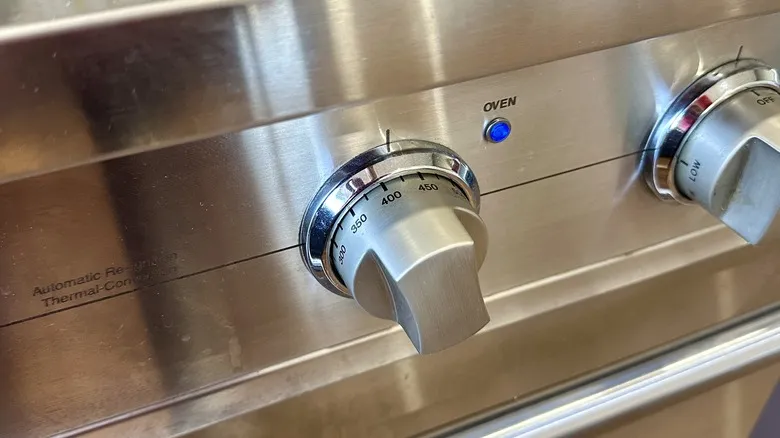
Set the oven temperature to 425°F.
Step 2: Prepare a pan
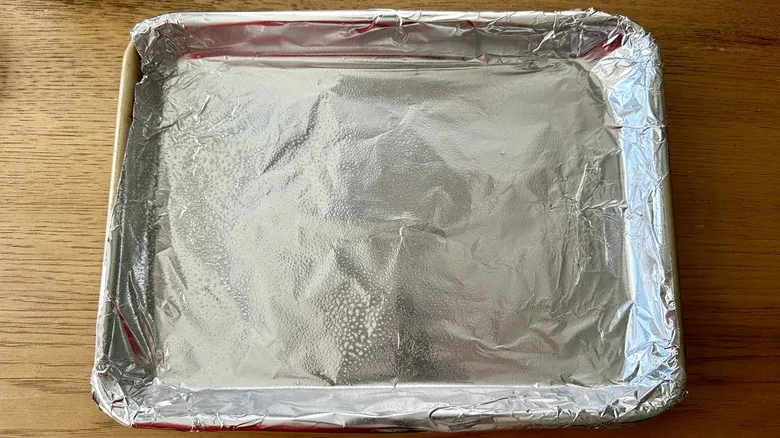
Prepare a small baking sheet by lining it with aluminum foil and applying a layer of cooking spray. Set it aside.
Step 3: Season the breadcrumbs
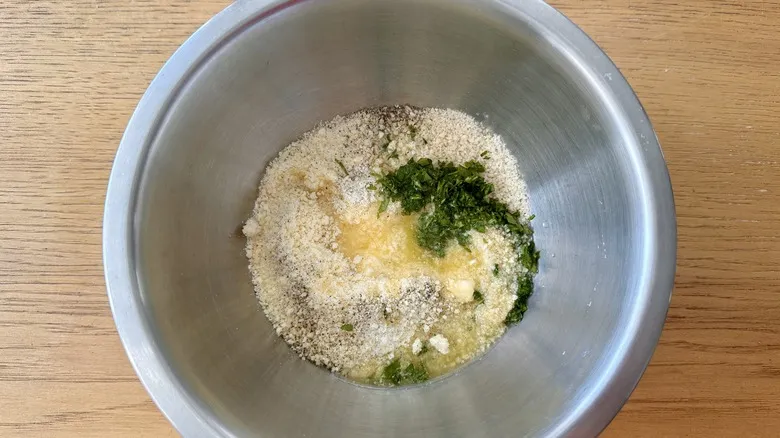
In a small bowl, mix together the panko, Parmesan, 1 tablespoon of chopped parsley, ? teaspoon of salt, and ? teaspoon of pepper.
Step 4: Stir in some butter
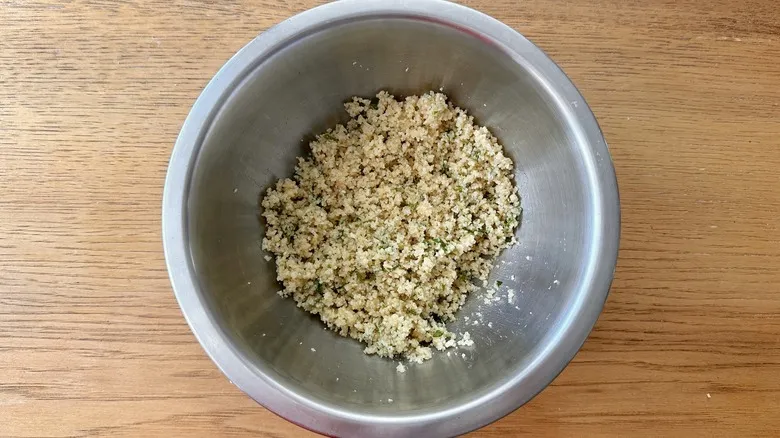
Incorporate 3 tablespoons of melted butter and stir until well blended. Set aside.
Step 5: Salt and pepper the salmon
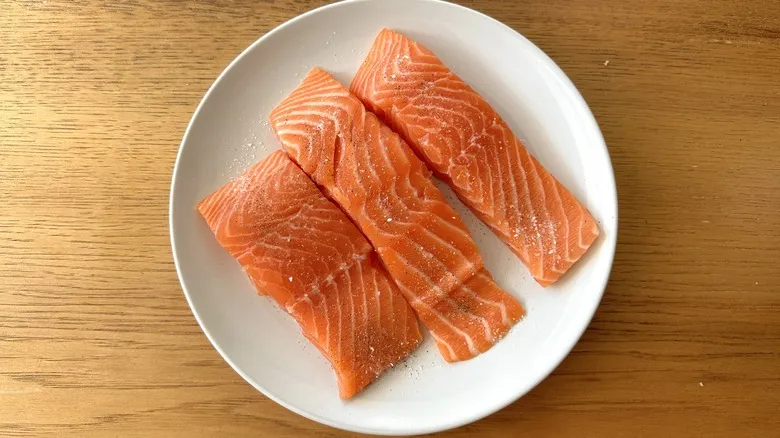
Sprinkle salt and pepper on both sides of the salmon fillets.
Step 6: Place the salmon on the pan
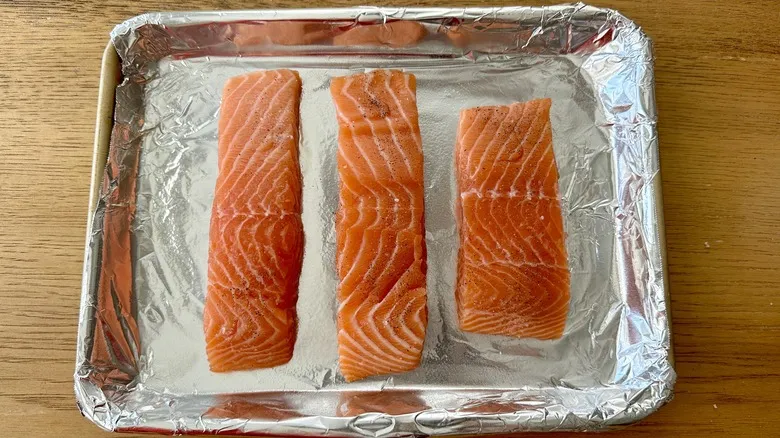
Place the salmon onto the prepared baking sheet, ensuring that each fillet is spaced at least 1 inch apart.
Step 7: Sprinkle salmon with crumbs
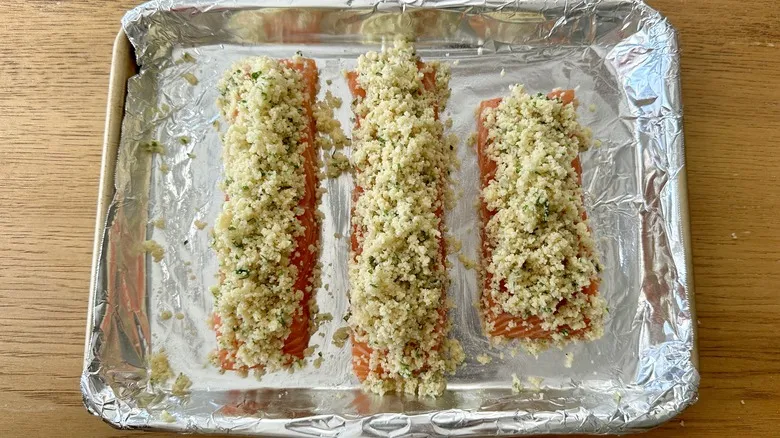
Sprinkle the panko mixture evenly on top.
Step 8: Cook the salmon
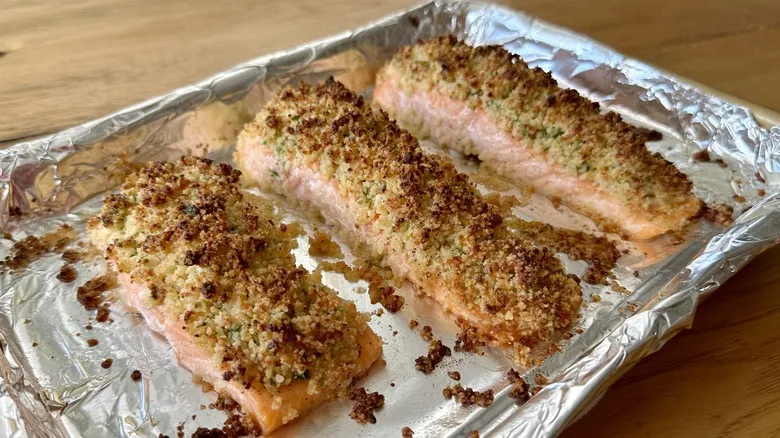
Cook for 12 to 15 minutes until golden brown, ensuring the internal temperature of the salmon reaches 145°F.
Step 9: Saute the garlic
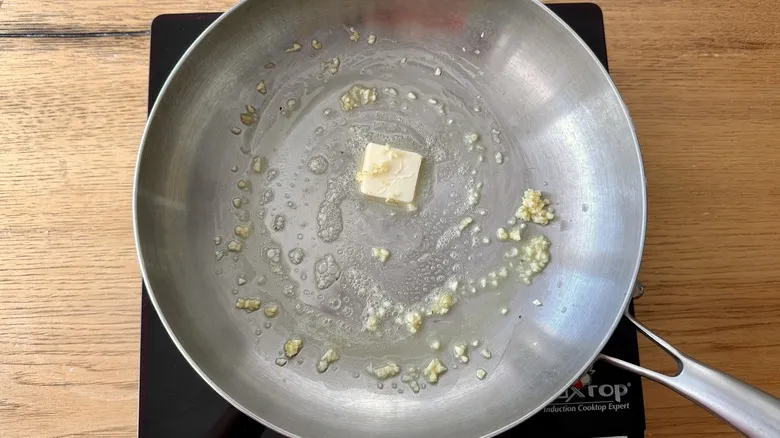
In the interim, get the sauce ready: In a medium skillet, melt butter and sauté garlic over low heat, stirring until the garlic becomes aromatic and the butter is fully melted.
Step 10: Stir in the flour
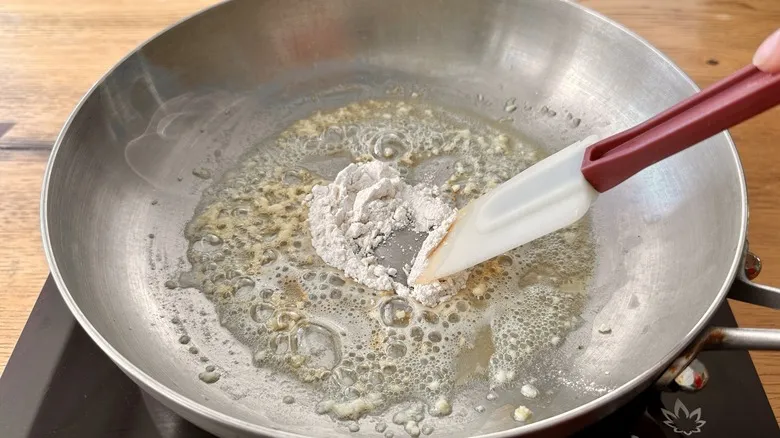
Incorporate the flour and sauté while stirring for one minute.
Step 11: Add the wine
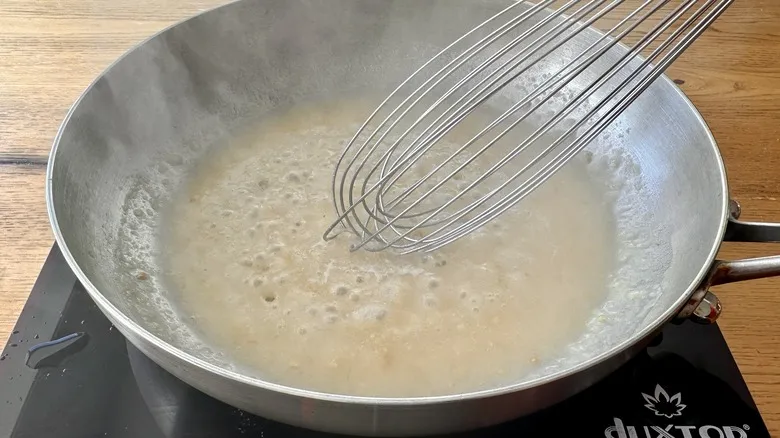
Stir in the wine and heat until it simmers.
Step 12: Add the cream
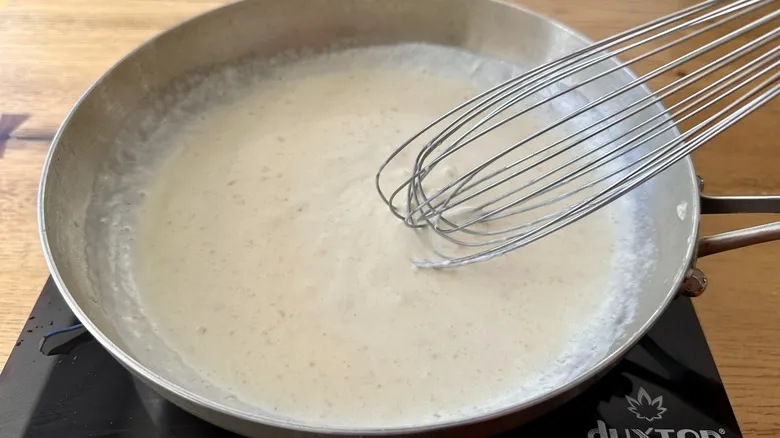
Gradually incorporate the cream while whisking, and continue to cook, whisking, until the mixture thickens enough to coat the back of a spoon.
Step 13: Season the sauce

Take the sauce off the heat and stir in the mustard, lemon zest, and herbs. Adjust the flavor with salt and pepper to your liking.
Step 14: Pour the sauce over the salmon
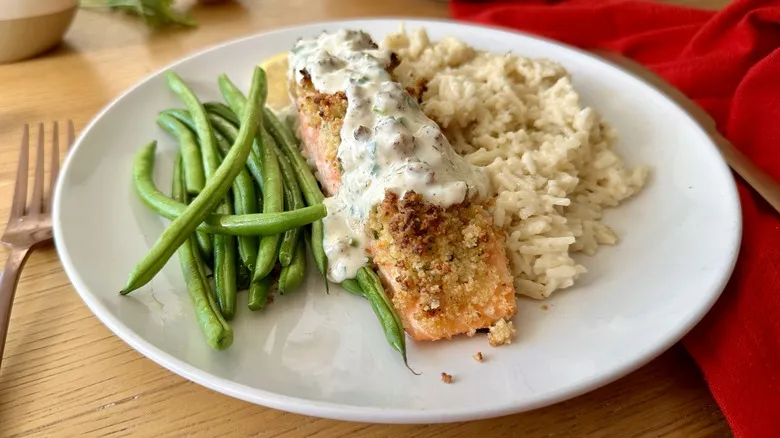
Drizzle the sauce over the cooked salmon and serve it warm alongside rice, vegetables, and any other side dishes you prefer.
How can I switch up the Parmesan-crusted salmon or creamy sauce?
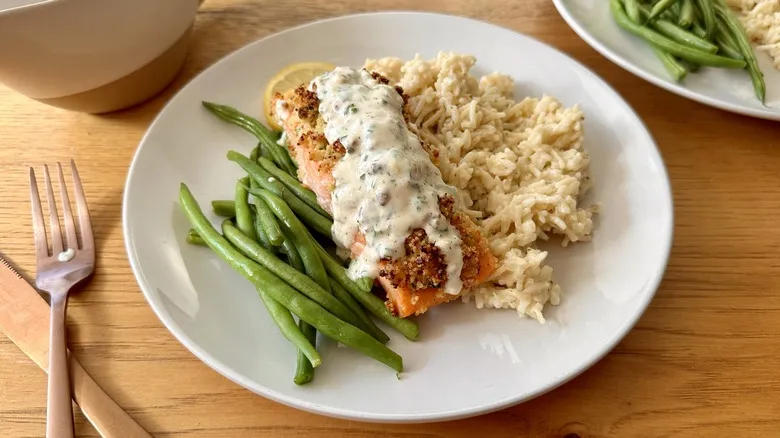
If you don't have panko breadcrumbs on hand, you can substitute them with regular breadcrumbs in this recipe, or you can create your own using leftover bread or croutons. For a low-carb option, consider using crushed nuts or pork rinds for the crust. When it comes to cheese, you can replace Parmesan with another hard cheese like pecorino Romano, asiago, or manchego.
For the sauce, you can substitute heavy cream with milk, plain yogurt, or cream cheese. To make an alcohol-free version, mix white wine vinegar with water in equal parts as a replacement for the wine. If you're short on time, you can always opt for a jar of pre-made hollandaise. Just stir in some chives and parsley if you have them, and add a squeeze of lemon to enhance the flavor. Alternatively, you could use store-bought alfredo sauce, as its Parmesan flavor would pair well with the cheese in the crust.
How can I tell when the salmon is done cooking?
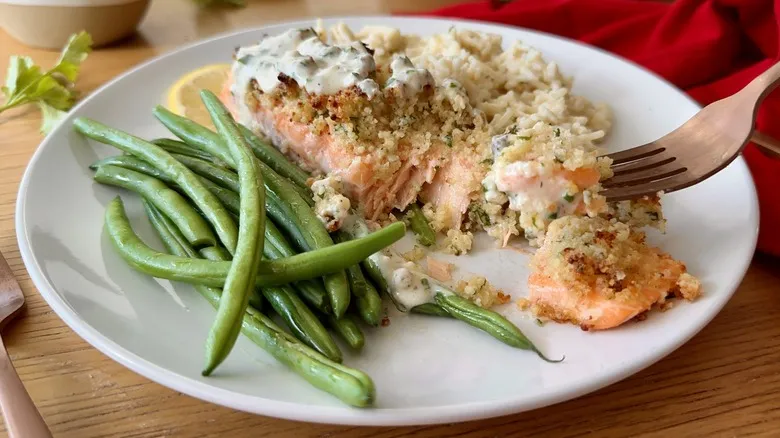
One of the most common errors when cooking salmon is misjudging the timing. Undercooking it can lead to foodborne illnesses or an unappealing texture. While this issue can be remedied by leaving the fish in the oven for a few extra minutes, overcooking is much more difficult to fix. Overcooked salmon often turns out dry and rubbery, and it can also leave an unpleasant odor in your home.
The most reliable way to check if your salmon is fully cooked is by using a meat thermometer. When the internal temperature reaches 145°F, it's time to take the fish out of the oven. Although a thermometer should be your primary tool, you can also use a secondary method, such as gently poking the fish with a fork. If the flesh flakes easily, it’s ready to serve.
Recommended
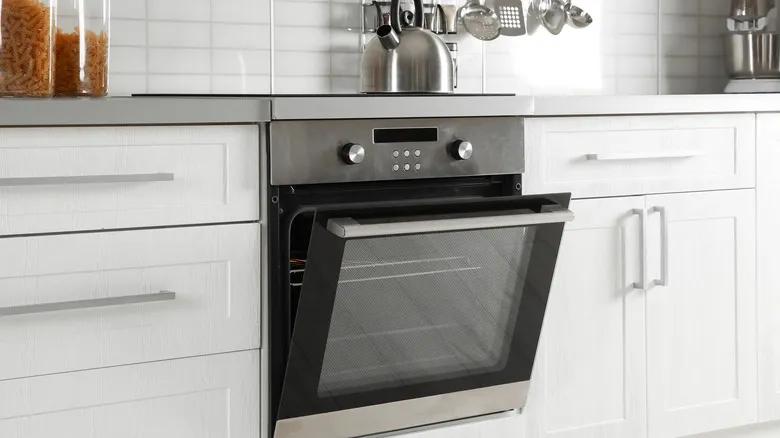
The Simple Way To Adjust Recipes For A Convection Oven
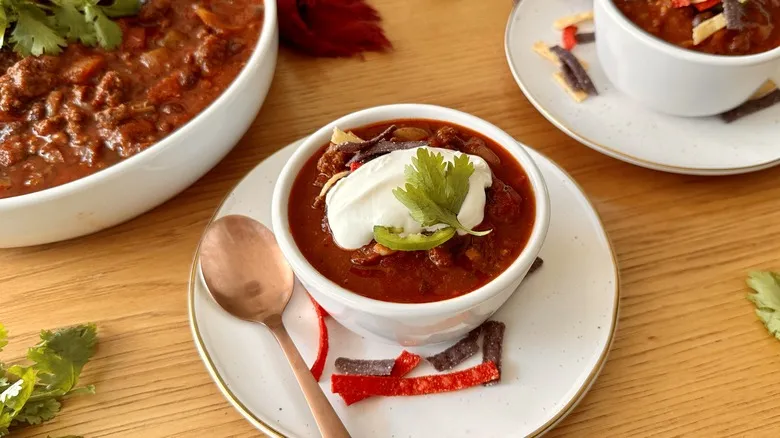
Spicy Slow Cooker Beef Chili Recipe

Homeroom's Ultimate Macaroni And Cheese Recipe
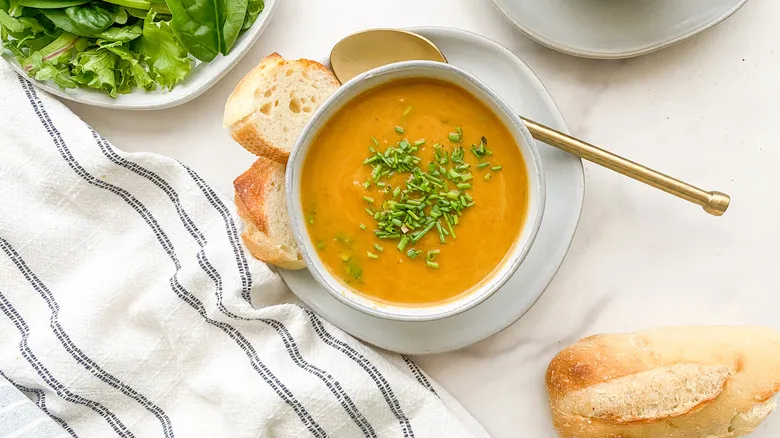
Simple Roasted Butternut Squash Soup Recipe
Next up

